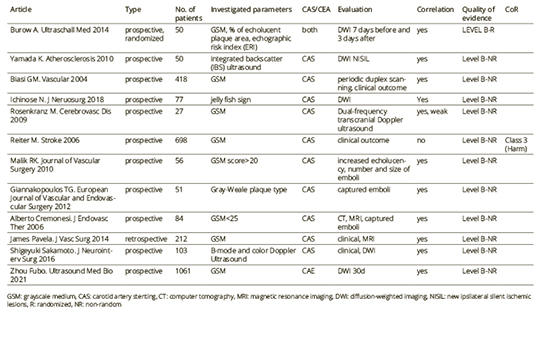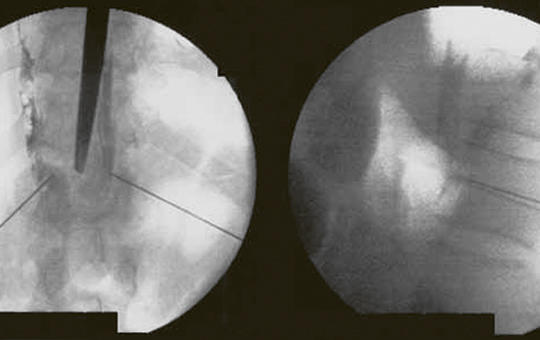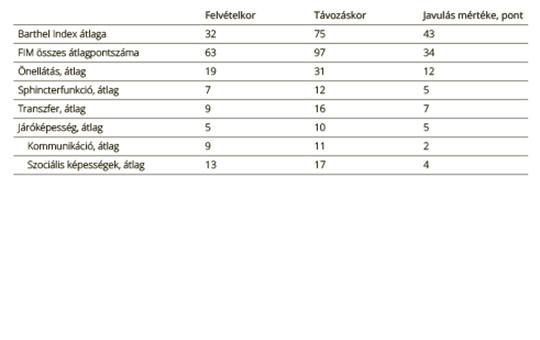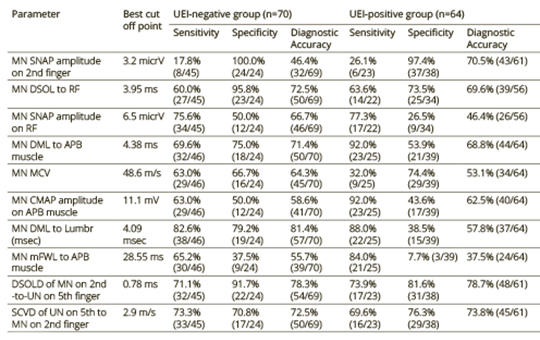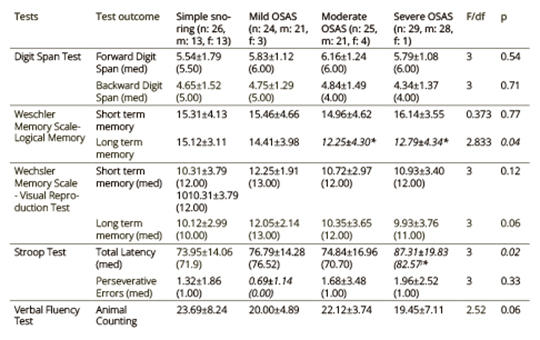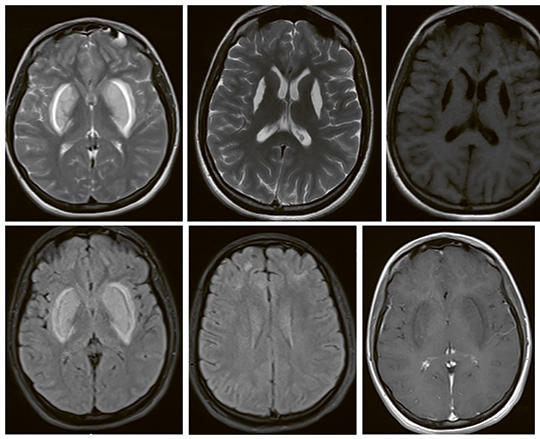The eLitMed.hu medical portal uses computer cookies for convenient operation. Detailed information can be found in the Cookie-policy.
Clinical Neuroscience - 2023;76(3-4)
Content
[Personalized treatment options for spinal muscular atrophy]
[Spinal muscular atrophy (SMA) is an autosomal recessive disease leading to progressive muscle weakness and atrophy, in severe cases also affecting the bulbar and respiratory muscles.The clinical spectrum of the disease is extremely variable, in the most severe cases resulting in perinatal death, while at the least severe end of the spectrum causing some motor deficits in old age without the loss of ambulation.]
Can carotid ultrasound predict neurological risk after carotid intervention?
To prevent ischemic strokes caused by carotid artery stenosis, carotid artery stenting (CAS) and carotid endarterectomy (CEA) have been utilized. However, complications could be linked to either or both procedures. The purpose of our study is to find the most efficient carotid ultrasound method to forecast periprocedural risk (embolization, new neurological symptoms).
[Cancer pain relief with drugs and neurolytic nerve blocks]
[Drug therapy with non-opioid, opioid and adjuvant drugs is the mainstay of cancer pain relief. The three step analgesic ladder, published by WHO in 1986 Geneva, is useful for oncologists and general practitioners. The first step is giving minor analgesics and adjuvant drugs; the second is giving minor analgesics, weak opioid and adjuvant drugs; the third step is giving minor analgesics, strong opioids and adjuvant drugs.]
[Stroke rehabilitation outcome in an inpatient neurological rehabilitation unit]
[To examine the rehabilitation outcome of patients who have suffered a stroke and subsequently received priority rehabilitation in hospital inpatient care, with a focus on changes in functional status.]
Median to ulnar nerve comparison on diagnosis of carpal tunnel syndrome in patients with diabetic polyneuropathy – A neurophysiological study
To analyze the utility of median nerve (MN) to ulnar nerve (UN) comparative parameters on the diagnosis of carpal tunnel syndrome (CTS) in diabetic patients with distal symmetrical sensorimotor polyneuropathy (DSMPNP).
The effect of disease severity and chronic CPAP-therapy on cognitive functions and event related potentials in OSAS
Obstructive sleep apnea syndrome (OSAS) may cause daytime sleepiness, mood changes and dysfunction in various cognitive areas due to recurrent arousals and / or chronic intermittent hypoxia. Different possibilities have been proposed regarding the most affected cognitive areas and mechanisms of OSAS. However, it is difficult to compare findings of the different studies due to the fact that individuals with different disease severities were included in the study groups. In the current study, we aimed to determine the relationship between severity of OSAS and cognitive functions, to investigate the effect of continuous positive airway pressure (CPAP) titration treatment on cognitive functions and the relationship between these changes and electrophysiological potential.
The study included 4 groups of patients with simple snoring and mild, moderate and severe OSAS. In the pre-treatment evaluations, verbal fluency, visuospatial memory, attention, executive functions, language abilities and electrophysiological tests for event-related potential were performed. The same procedure was reapplied after 4 months of CPAP-therapy.
Long-term recall scores and total word fluency scores were found to be low in the groups with moderate and severe disease compared to the patients with simple snoring (p: 0.04, p: 0.03, respectively). The information processing time was higher in patients with severe disease compared to patients with simple snoring (p: 0.02). The P200 and N100 latencies related to event related potentials (ERP) were significantly different between the groups (p: 0.004, p: 0.008, respectively). After CPAP treatment, significant differences were found in N100 amplitude and latencies and all cognitive areas except abstraction. In addition, N100 amplitude and latency change rate as well as change in attention and memory abilities were correlated (r: 0.72, p: 0.02; r: 0.57, p: 0.03, respectively).
In the current research, disease severity was found to negatively affect long-term logical memory, sustained attention and verbal fluency. Moreover, significant improvement was detected in all cognitive areas with CPAP treatment. The findings of our study support that changes in N100 potential have the potential to be used as a biomarker that can be used to monitor cognitive function recovery after treatment.
Acute parkinsonism due to transdermal methanol intoxication: First report
Methanol is a colorless and highly toxic liquid similar to ethanol in odor and taste. Methanol intake can lead to severe metabolic acidosis, loss of vision, permanent neurological damage, and death.
1.
Clinical Neuroscience
[Headache registry in Szeged: Experiences regarding to migraine patients]2.
Clinical Neuroscience
[The new target population of stroke awareness campaign: Kindergarten students ]3.
Clinical Neuroscience
Is there any difference in mortality rates of atrial fibrillation detected before or after ischemic stroke?4.
Clinical Neuroscience
Factors influencing the level of stigma in Parkinson’s disease in western Turkey5.
Clinical Neuroscience
[The effects of demographic and clinical factors on the severity of poststroke aphasia]1.
2.
Clinical Oncology
[Pancreatic cancer: ESMO Clinical Practice Guideline for diagnosis, treatment and follow-up]3.
Clinical Oncology
[Pharmacovigilance landscape – Lessons from the past and opportunities for future]4.
5.




